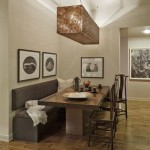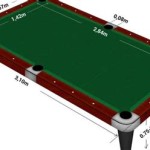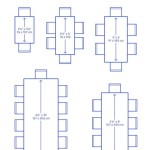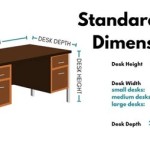How Many People Does A 60-Inch Round Table Seat?
Determining the optimal seating capacity for a 60-inch round table is crucial for event planning, restaurant layout design, and even home dining arrangements. While the physical dimensions of the table remain constant, the comfortable and practical seating capacity can vary depending on several factors. These factors include the desired level of comfort for guests, the presence of bulky chairs, the amount of space needed for place settings and centerpieces, and overall accessibility for diners to maneuver around the table. Therefore, understanding these variables is essential for achieving a balance between maximizing seating and ensuring a pleasant dining experience.
A 60-inch round table, which is five feet in diameter, provides a substantial surface area for dining. This size table is frequently selected for events such as weddings, banquets, and corporate luncheons, as it represents a good compromise between fitting a sufficient number of guests and maintaining an atmosphere conducive to conversation. Unlike rectangular tables, round tables facilitate easier interaction among all seated guests, as everyone is facing towards the center, promoting a more inclusive and conversational environment. However, without careful consideration of spacing and seating arrangements, the benefits of a round table can be undermined by overcrowding and discomfort.
The seating capacity of a 60-inch round table is not a fixed number; rather, it exists within a range influenced by practical and aesthetic considerations. Understanding this range allows for flexibility in planning and allows hosts to adjust the seating arrangement to best suit the needs of their event or venue. This article will delve into the key factors that influence the seating capacity of a 60-inch round table, providing insights into determining the optimal number of guests that can be comfortably accommodated.
Key Point 1: Comfortable Seating Capacity: The Standard Recommendation
The commonly accepted standard for comfortably seating guests at a 60-inch round table is eight people. This recommendation is based on providing each guest with approximately 30 inches of personal space around the table's circumference. This amount of space allows for comfortable dining, adequate room for elbows, and relative ease of movement in and out of the chair. When eight chairs are evenly spaced around the table, the result is a balanced and aesthetically pleasing arrangement that prioritizes guest comfort.
The 30-inch guideline ensures that each guest has sufficient room to enjoy their meal without feeling cramped or encroaching on the space of their neighbors. This is especially important during longer events, where guests will be seated for extended periods. Maintaining comfortable spacing contributes significantly to the overall positive dining experience. Overcrowding can lead to discomfort, awkward interactions, and difficulty in accessing the table for both serving staff and diners themselves.
Furthermore, this standard seating arrangement allows sufficient room for standard place settings, including plates, cutlery, glasses, and napkins. It also leaves ample space for a centerpiece, which can further enhance the aesthetic appeal of the table without overwhelming the dining area or obstructing the view between guests. By adhering to the eight-person standard, event planners and hosts can create a dining environment that is both functional and visually appealing.
However, it's critical to remember that this is just a general guideline. The ideal seating number may need to be adjusted based on specific circumstances, such as the type of chairs being used or the overall atmosphere desired for the event. Understanding these factors is vital for making informed decisions about seating arrangements.
Key Point 2: Factors Influencing Seating Capacity: Chairs, Space, and Accessibility
Several factors can influence the appropriate seating capacity for a 60-inch round table, deviating from the standard recommendation of eight people. The type of chairs used is a significant determinant. Bulky chairs, such as those with arms or wide frames, require more space and may reduce the number of guests that can be comfortably seated. Conversely, smaller, more streamlined chairs can allow for a slightly higher seating density without compromising comfort.
The available space in the room or venue also plays a crucial role. If the tables are positioned close together, maximizing seating might be a priority. However, if the tables are more widely spaced, prioritizing comfort and accessibility may be more important. Sufficient space between tables allows guests and serving staff to move freely and reduces the likelihood of bumping into chairs or disrupting other diners. The recommended space between tables is at least 36 inches to allow easy passage. Insufficient space between tables contributes to a crowded and uncomfortable atmosphere.
Accessibility considerations are also paramount. Adequate space should be provided for guests using wheelchairs or other mobility aids. This may mean reducing the number of chairs at a table to create more maneuvering room. Safety regulations should also be considered, ensuring that aisles and exits remain clear and unobstructed. Fire codes and other safety guidelines might impose restrictions on the number of people allowed in a given area, which can impact the overall seating plan.
The height and style of centerpieces can also play a role. Large, elaborate centerpieces can take up valuable table space, reducing the area available for place settings and impacting the overall seating arrangement. Therefore, choosing centerpieces that are both visually appealing and functionally appropriate is essential for optimizing seating capacity and maintaining a comfortable dining environment.
Key Point 3: Adjusting Seating Capacity: Maximizing Guests vs. Comfort Prioritization
While the comfortable standard is eight people, it's possible to seat more guests at a 60-inch round table, but doing so requires careful consideration and a clear understanding of the trade-offs involved. In some situations, maximizing the number of guests may be necessary, such as at a large event with a limited budget or venue space. In these cases, it may be possible to seat up to ten people at a 60-inch round table. However, this arrangement will inevitably result in a more crowded and less comfortable dining experience.
When attempting to maximize seating, it's crucial to choose chairs that are as compact as possible. Chairs without arms are preferable, as they take up less lateral space. The place settings should also be streamlined, minimizing the number of items on the table and using smaller plates and glassware. Centerpieces should be kept minimal, or even eliminated altogether, to free up valuable table space. It's also important to consider the overall flow of the room, ensuring that there is still adequate space for guests and staff to move around freely.
Conversely, if comfort is the top priority, it may be desirable to seat fewer than eight people at a 60-inch round table. This arrangement is particularly well-suited for intimate gatherings or events where guests are expected to spend a significant amount of time at the table. Seating only six people at a 60-inch round table creates a spacious and luxurious dining environment, allowing for ample room for each guest. This arrangement also provides more flexibility in terms of place settings and centerpiece design.
Ultimately, the decision on how many people to seat at a 60-inch round table depends on a variety of factors, including the specific needs of the event, the available space, the type of chairs being used, and the desired level of comfort. By carefully considering these factors, event planners and hosts can create a dining environment that is both functional and enjoyable for all guests.
Consideration of the food service style also has an impact. Buffet style service requires less space per person at the table as guests get up to get their food, resulting in a shorter time actually sitting at the table. Similarly, a fast-moving event with short speeches and ample breaks may call for a different seating arrangement than a long, formal dinner. Understanding the dynamics of the event itself is crucial in determining the optimal seating configuration.

72 Round Plywood Banquet Table The Chiavari Chair Company

60 Round Table Seat 8 To 10 Destination Events

60 Round Table For Orange County Ca On Call Event Als

Table Seating Capacity Contemporary Craftsman Furniture

Amish Table Size Guide What Dining Do You Need

60 Round Table Seat 8 To 10 Destination Events

Table Als Big Tent Events

60 Inch Round Table How Many People Can Fit

60 Round Seats 8 10 Ppl Tesoro Event Als

Tent Ing Information For 20 By Party Tents








